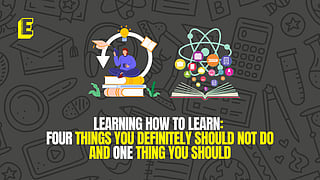
So, technically, we are all lifelong learners. We are always, consciously or unconsciously, picking up one or the other skill, quality, lesson or some sort in our lives. But for a student, learning is the most essential part of their lives.
But when we need to sit down and apply ourselves, how do we go about it? It is important to understand what we should be doing, but it is also important to understand what we should NOT be doing, when it comes to learning and the various strategies involved.
Hence, let's look at what we definitely shouldn't do when we are learning.
This passive strategy fosters a false sense of confidence. Its relatively relaxed approach lacks active retrieval of information, rendering it ineffective for long-term retention
While more active than rereading, highlighting doesn't enhance long-term memory. Students may also highlight non-essential information. Studies, like the one at Kent State University, label highlighting as a 'low utility' technique that adds little to performance
Effective for rote learning but falls short in promoting a deeper understanding. While useful in subjects like Chemistry, it should complement, not replace, active recall for overall comprehensive learning
Common yet counterproductive, cramming yields short-term achievements but fails in long-term retention due to the Forgetting Curve. Marks may be earned, but the knowledge quickly fades away
Instead of mastering one topic through continuous repetition (blocked practice), one can opt for mixed practice. This technique enhances memory by differentiating related topics, fostering stronger memory associations
